RHS Chelsea Flower Show designers reveal how to make your yard flood-resilient – 5 ways to protect your garden
Award-winning designers share their top tips for protecting your backyard from extreme weather
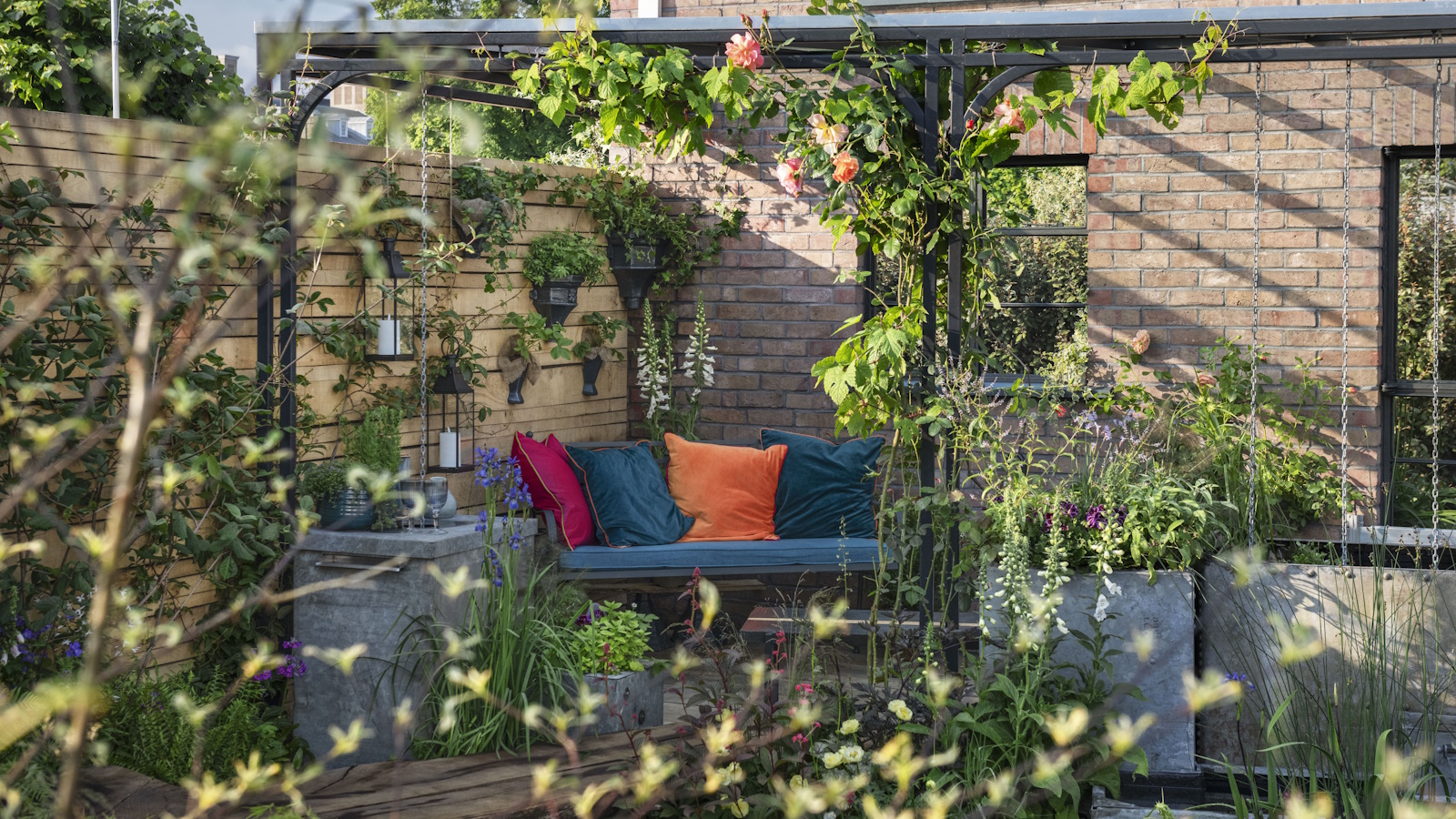

If you live in an area susceptible to heavy rainfall and flooding, it's vital to get your yard in shape to ensure both your land and home are protected from damage. Understanding how to work with your local climate, by incorporating different features and making careful choices about planting, can help to make your yard flood-resilient.
This week I attended the RHS Chelsea Flower Show in London, where I had the joy of exploring many inspirational backyard ideas. The Flood Resilient Garden designed by renowned garden designers Naomi Slade and Dr. Ed Barsley, in collaboration with Flood Re, illustrated how you can make landscaping and planting choices to protect your home and help your garden cope with extreme weather.
I spoke to the pair of designers to find out more about how to make a yard flood-resilient, and asked them to share some top tips.
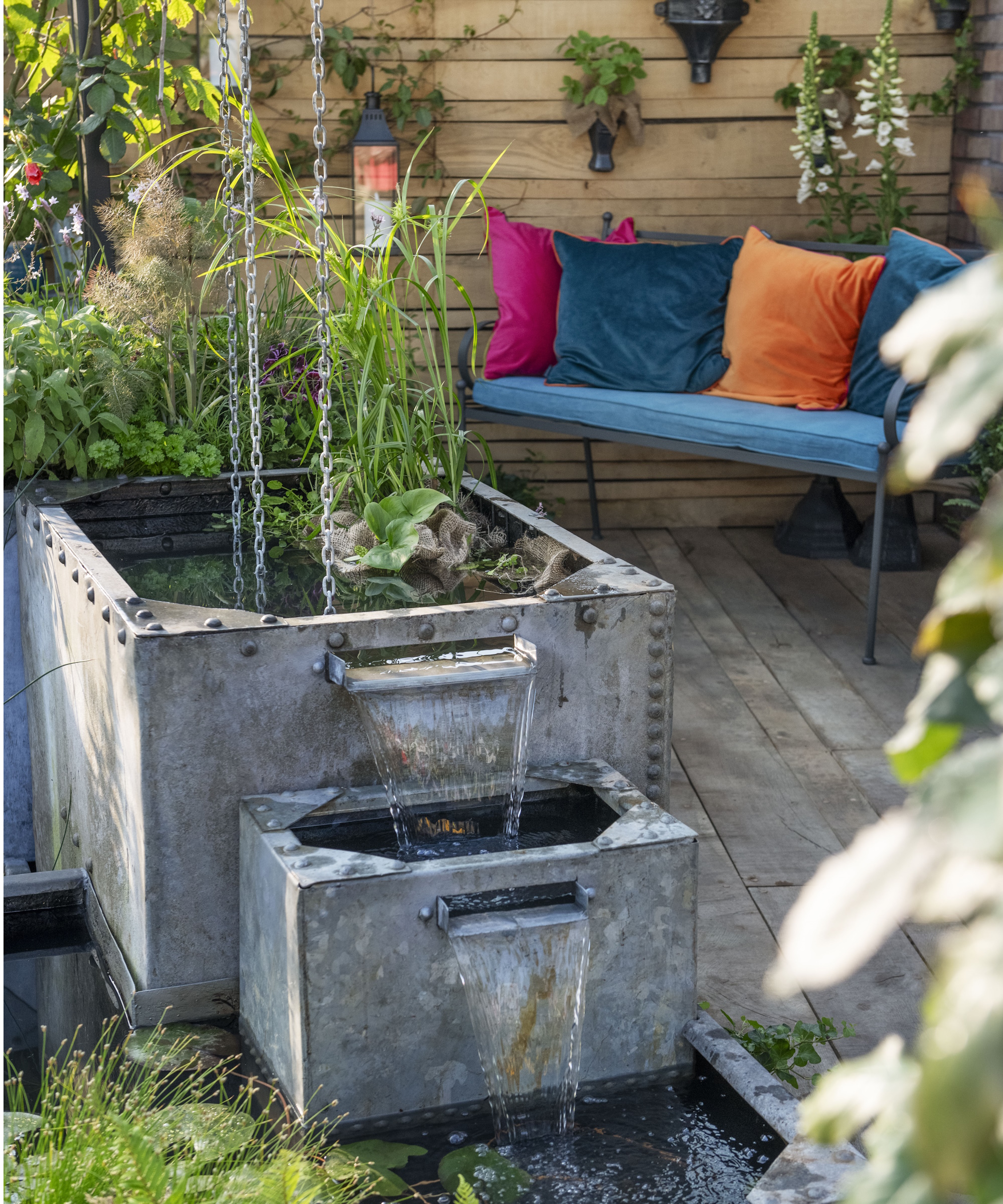
What role do gardens play in flood resistance?
Whether or not your backyard is susceptible to flooding will depend on your US hardiness zone, local weather conditions, and the design of your backyard. If you do live in a flood risk area, your yard will have an important role to play in protecting your home.
'If you think of a garden as a natural or semi-natural system, there are all sorts of ways that it can absorb water or slow the flow of rainwater into the surrounding environment,' Naomi tells me.
'For example, simply planting trees and shrubs means that the water has to pass through a canopy of leaves, will reach the ground more slowly and sink in more gradually,' she adds.
Reducing the likelihood of your backyard flooding and helping it to better cope with excess water can ensure both your yard and home are protected from possible damage.

Naomi Slade is a journalist, author, garden designer and consultant. She works extensively within the gardening and lifestyle media as a writer and broadcaster and lectures on a range of specialist subjects. She has written a number of popular gardening books with English and American editions.
5 ways to make your yard flood-resilient
Naomi and Ed share five ways you can help your garden to cope with extreme weather.
1. Slow the flow of water
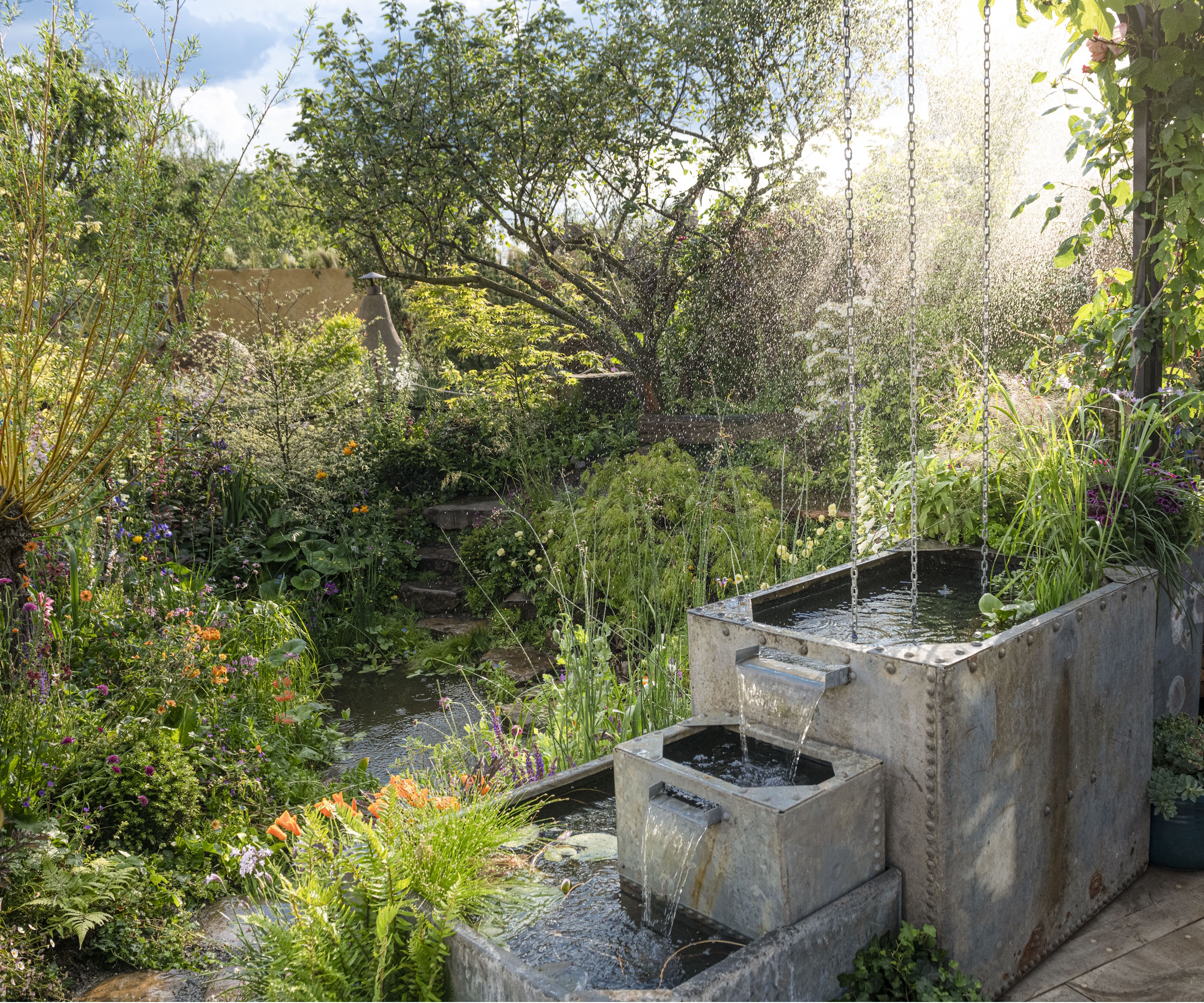
Naomi and Ed tell me that the first thing you should try to do is slow the flow of water in your yard.
'Slowing the flow of excess water will allow more time for your garden to absorb excess water and increase your resilience to floods,' says Ed. 'You can start by disconnecting your downpipes, fitting bigger gutters and reducing hard landscaping in your garden,' he adds.
Regularly cleaning your gutters from the roof and giving it some maintenance will also prevent gutters from clogging and ensure water doesn't build up there.
Other ways to reduce the pace of water flowing is by planting trees and shrubs to provide more foliage to capture water and slowly release it to the ground. Naomi and Ed included plenty of dense foliage in their Chelsea garden to demonstrate this.
Whether its the best trees for small gardens or bigger trees for privacy, it can be wise to have some in your yard to capture rainwater.

Dr. Ed Barsley is a designer, author, artist and entrepreneur. He is an expert in environmental design, with a particular interest in developing strategies to improve the resilience of communities and the built/natural environment.
2. Make space for water
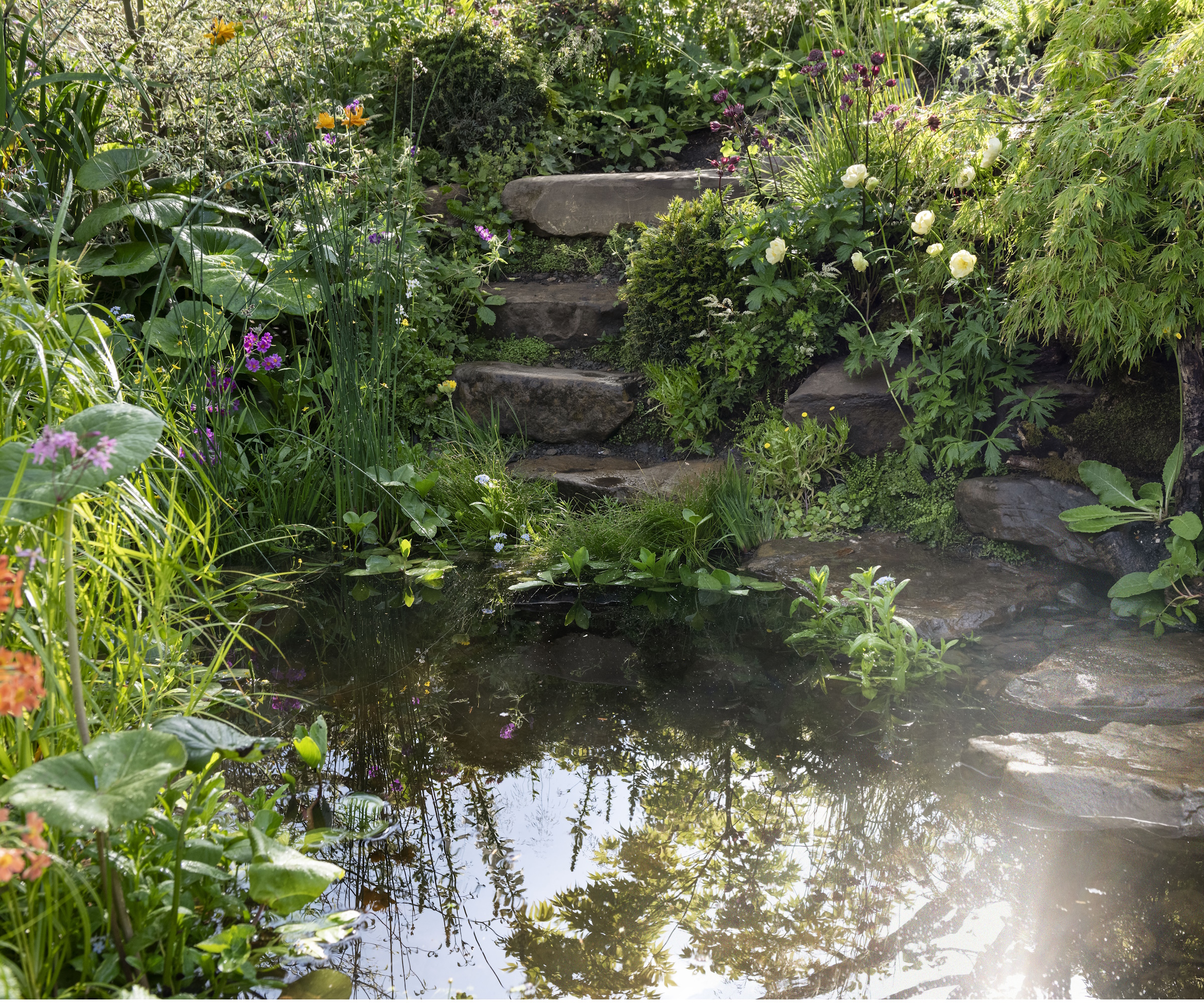
You should also make sure that excess water has somewhere to go in your yard, whether its by adding a garden pond or creating a water garden.
'Adding ponds, using water butts and planting deep-rooted plants can reduce surface runoff and improve soil infiltration, which will minimise the risk of local flooding,' says Ed.
'Creating designated areas for water to collect during heavy rainfall will allow excess water to be stored whilst keeping your garden beautiful,' he adds.
The Flood Resilient Garden at Chelsea included a sunken swale to capture and accommodate surplus water.
It can also be a good idea to make a rain barrel or install a rain chain to collect surplus water. The bonus is that these both help with garden water-saving, so that you can reuse the collected water in your yard.
There are plenty of rain barrels available online, like this rain barrel from Amazon, and rain chains, like this rain chain from Amazon.
3. Use flood-resilient plants
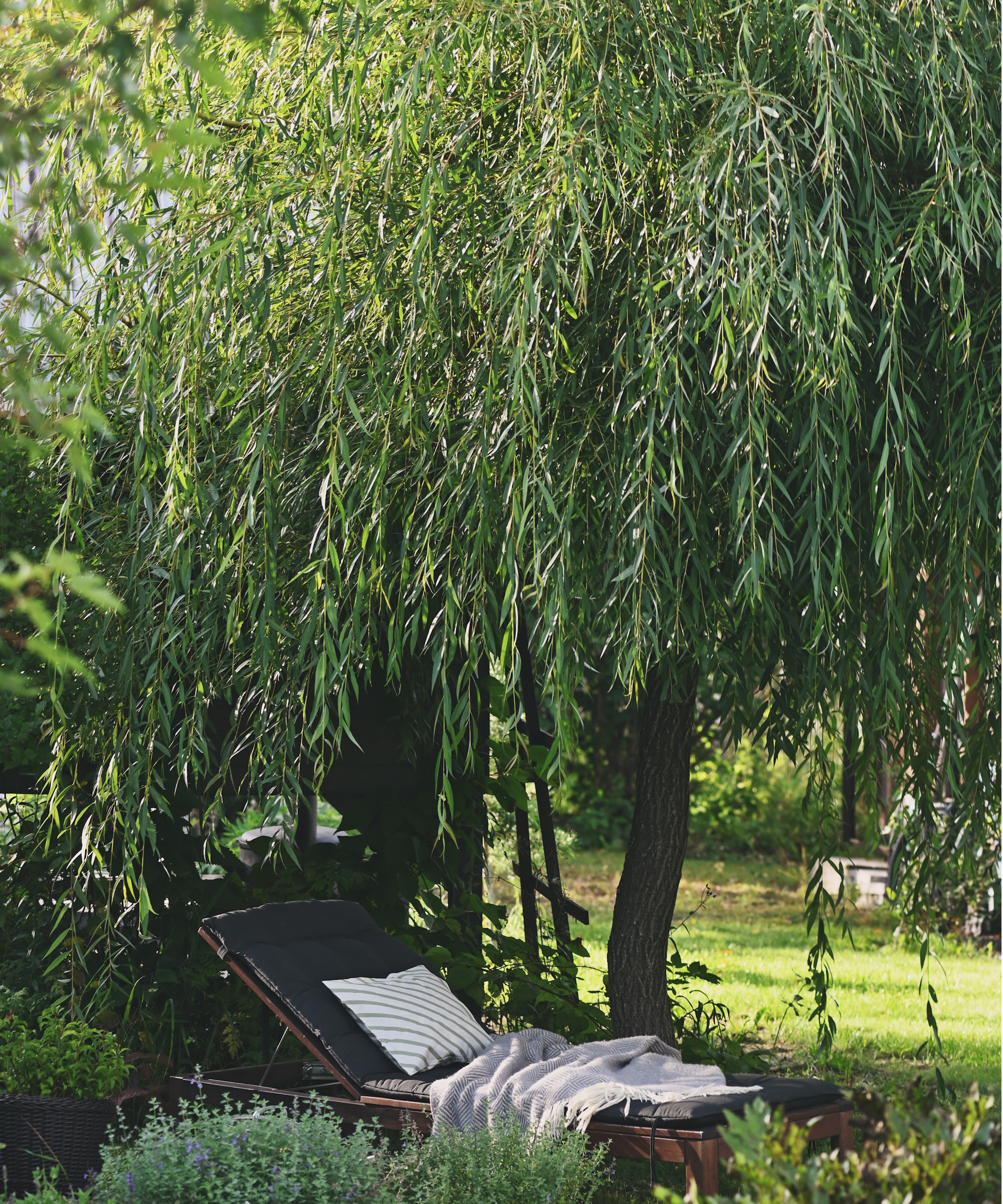
Just as there are many drought-tolerant plants, there are plenty of plants out there that can cope with being oversaturated and the designers encourage using them in your yard if you live in a flood risk area.
'Incorporating flood-resilient plants like willows, water mint, astilbes, male ferns and lady’s smock will mean that there is plenty of interest, even in damp conditions,' Naomi shares.
If you have a pond in your backyard, you can also use pond plants to ensure you are providing lots of interest with plants that can thrive in wet conditions. Many are oxygenating pond plants which can also ensure your water is kept looking clean and fresh.
4. Take care of your soil
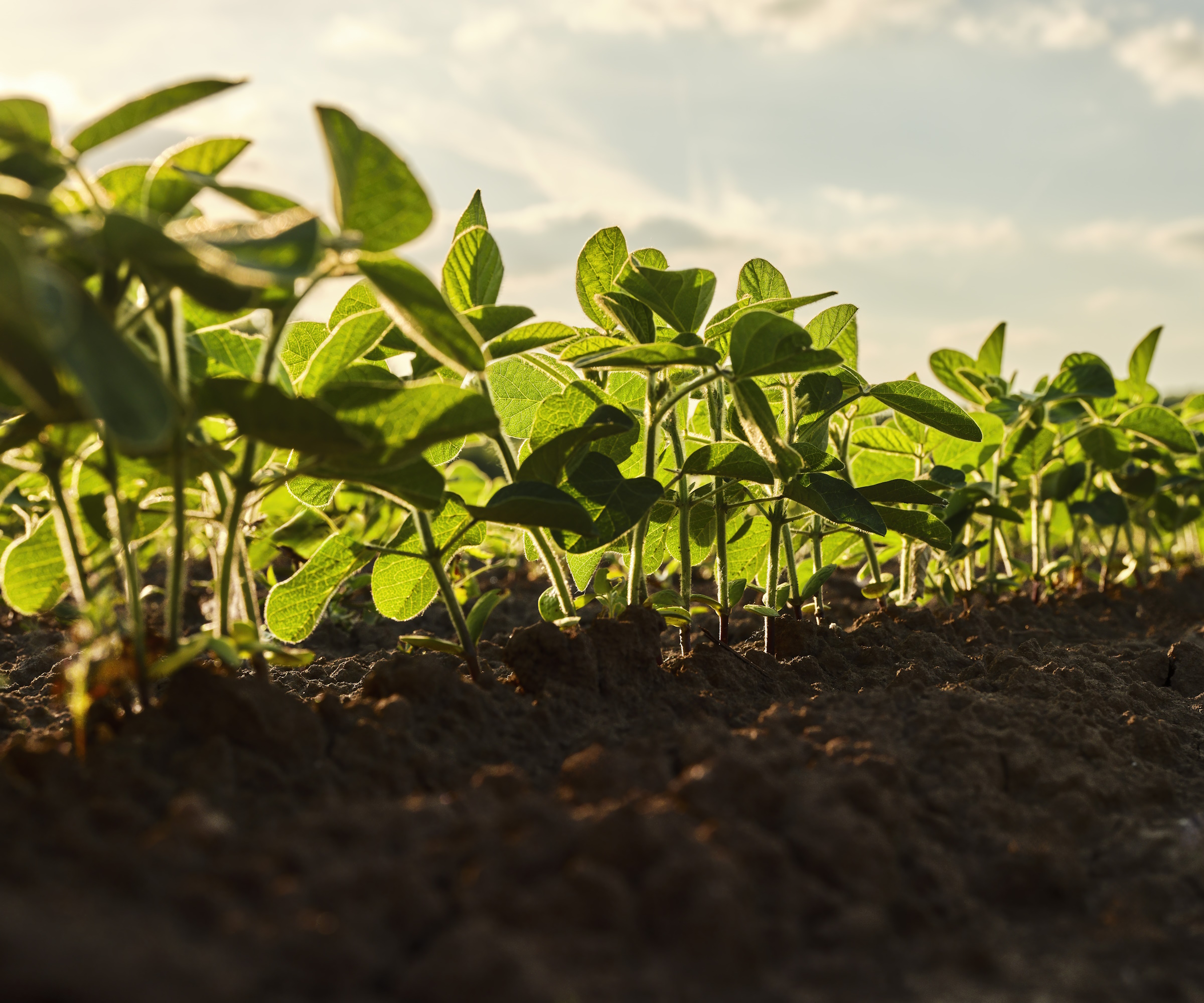
Soil health is vital in any backyard if you want a thriving garden, but Naomi and Ed stress the importance of keeping your soil in good condition to prevent surplus water on the ground of your yard.
'Soils which are full of organic matter and have been allowed to develop a good structure with plenty of air pockets act as sponges, soaking up the water gradually when it rains and allowing it to disperse naturally or be taken up by plants,' Naomi tells me.
You can improve you soil by aerating it with this aerator from Amazon, a method also used to aerate lawn. You can likewise use this soil moisture meter from Amazon to test how saturated your soil is and ensure it isn't becoming waterlogged.
5. Create areas that drain well

Another way to equip your backyard for flooding is by ensuring you have plenty of garden drainage features.
'Water runs downhill so creating raised areas such as mounds, planning on slopes or even installing a raised bed will give plants drier conditions if they need them and allow them to thrive,' says Naomi.
Hiring a landscape designer may help you incorporate more areas of your yard where plants that don't tolerate being consistently wet can drain well and not suffer from oversaturated soil. This includes designing a sloping garden or exploring raised garden bed ideas. You can also try using a French drain as an effective drainage solution.
FAQs
How can you protect garden wildlife from flooding?
By making your backyard flood-resilient, you can help protect garden wildlife from extreme weather. This includes ensuring habitats, like bird boxes and bug hotels, are raised above flood level. You can also provide plenty of climbing plants that provide wildlife with foliage for refuge above flood level.
'Thinking about how other creatures live and what they need to survive in a flood situation is a really interesting exercise,' says RHS Chelsea Flower Show designer Naomi Slade.
Naomi and Ed's RHS Chelsea Flower Show Garden highlights so many ways to protect your yard from extreme weather. If you live in an area susceptible to flooding, try these methods to make your backyard flood-resilient to protect your garden and home.
Discover our expert guide to reducing surface water run off in your yard for more advice on creating a garden that can cope with wetter conditions.
Sign up to the Homes & Gardens newsletter
Design expertise in your inbox – from inspiring decorating ideas and beautiful celebrity homes to practical gardening advice and shopping round-ups.

Tenielle is a Gardens News Writer at Homes & Gardens. She holds a qualification in MA Magazine Journalism and has over six years of journalistic experience. Before coming to Homes & Gardens, Tenielle was in the editorial department at the Royal Horticultural Society and worked on The Garden magazine. As our in-house houseplant expert, Tenielle writes on a range of solutions to houseplant problems, as well as other 'how to' guides, inspiring garden projects, and the latest gardening news. When she isn't writing, Tenielle can be found propagating her ever-growing collection of indoor plants, helping others overcome common houseplant pests and diseases, volunteering at a local gardening club, and attending gardening workshops, like a composting masterclass.
-
 This ultra-tiny 'luxury villa' is sold on Amazon – estate agents say this unconventional, pre-assembled home is more than a novelty
This ultra-tiny 'luxury villa' is sold on Amazon – estate agents say this unconventional, pre-assembled home is more than a novelty'Tiny homes are more than a trend. They’re part of a bigger conversation about how we live' – this foldable house is one of many shaping 2025's real estate industry
By Megan Slack
-
 You won’t believe these chic coastal backyard finds are from ALDI – and everything’s under $50
You won’t believe these chic coastal backyard finds are from ALDI – and everything’s under $50Hampton's style on an ALDI budget
By Charlotte Olby